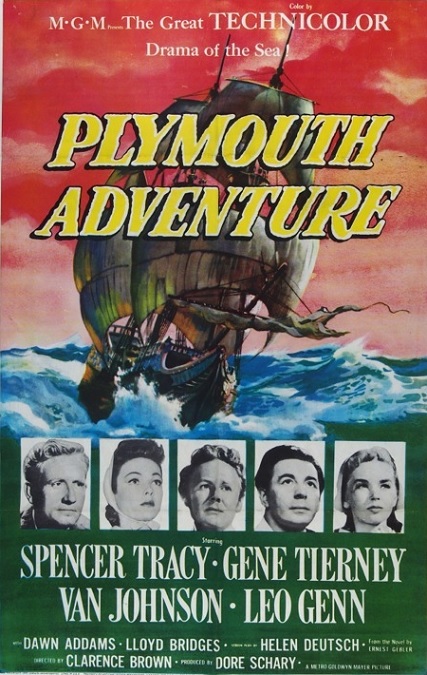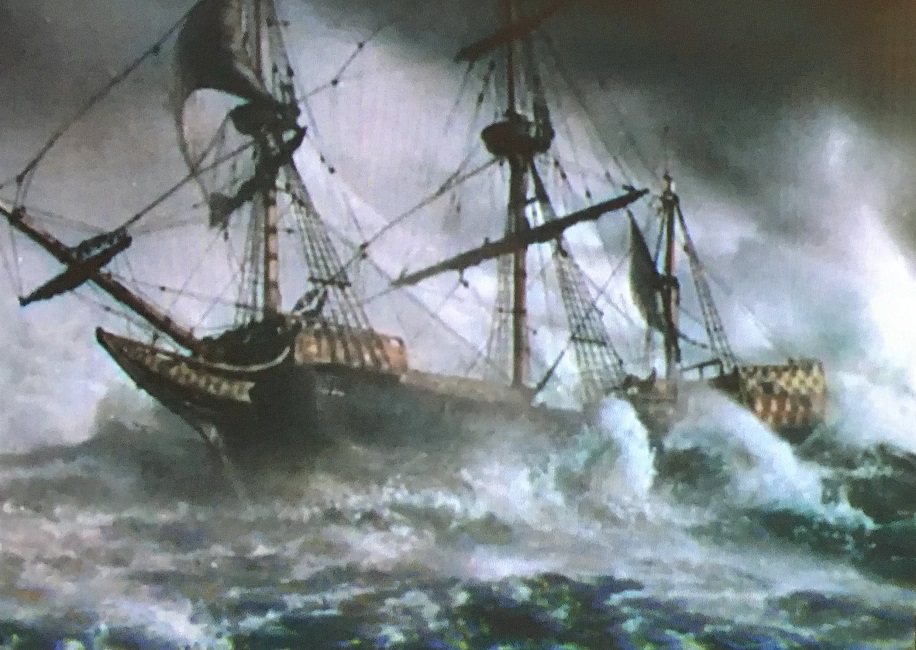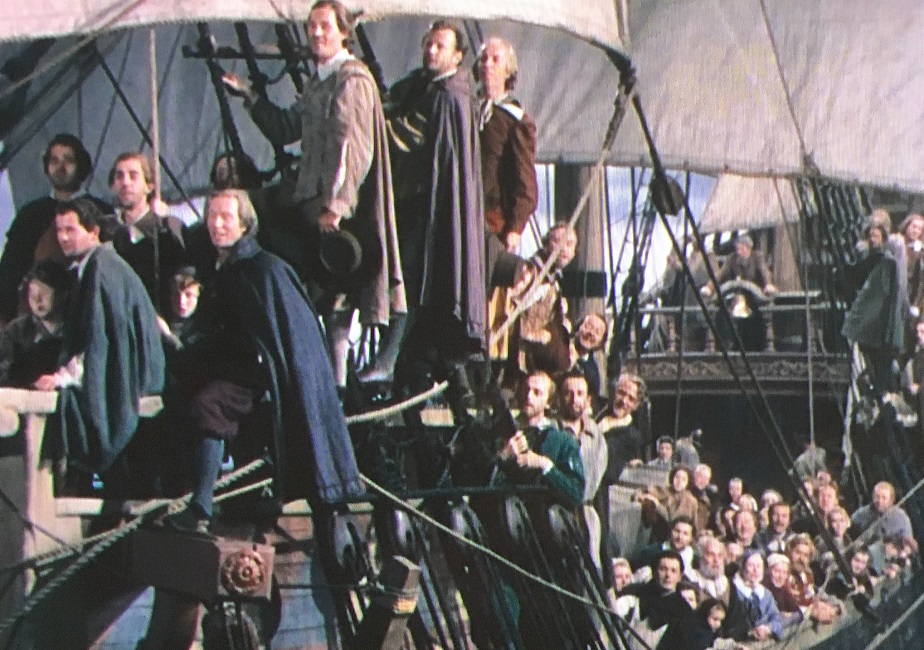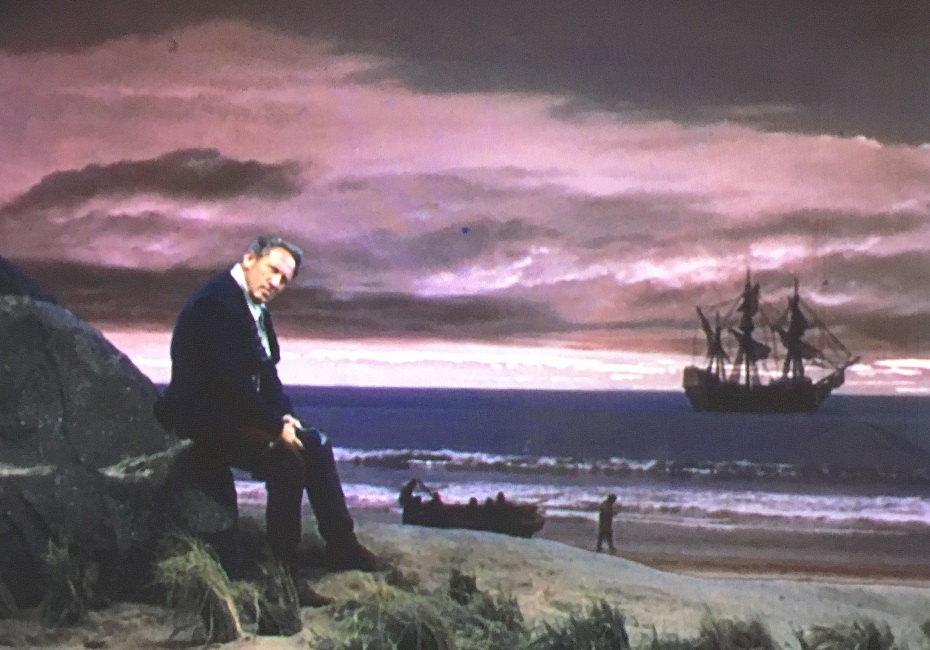



Plymouth Adventure – 1952 (WINNER)
 This movie’s special effects were good, but not as good as they thought they were. I was honestly expecting more from the only nominee for 1952. There were a good number of matte paintings, a fantastic storm that I’ll discuss in a bit, and that was about it. The problem, is that they were all effects I have seen before.
This movie’s special effects were good, but not as good as they thought they were. I was honestly expecting more from the only nominee for 1952. There were a good number of matte paintings, a fantastic storm that I’ll discuss in a bit, and that was about it. The problem, is that they were all effects I have seen before.
This Best Special Effects winner was in Technicolor, making great use of their color pallet, especially near the end of the movie. When the pilgrims made it to the shores of Cape Cod, we are given some pretty spectacular skies and backdrops that really helped to set the bright and hopeful futures of the characters in the story.
But I think that the storm that the Mayflower endured as it was crossing the Atlantic was really the movie’s showpiece. And what made it so good? Two things. The wide shots of the sailing vessel in the grip of the wind and waves, and the interior shots of the boat which showed the passengers really being thrown around, which is exactly what would have happened. So as the storm arises, and the wind and waves threaten to overturn the Mayflower, the award-winning visual effects finally kicked in.
I read an article by Leonard Maltin on the TMC website, which stated, “According to a 1952 article in American Cinematographer, about twenty-five percent of the shots of the Mayflower were actually studio-made miniatures.” I watched for it, but didn’t see any glaring examples of that strange-looking water that was filmed at close range with a scale-model of the Mayflower. It all looked very real and completely believable. They were actually very impressive effects. In fact, the life-sized boat built for the movie was actually listed as a character in the film’s closing credits.
The pilgrims are told to go below deck, and while they were indeed safer there, they were by no means safe from the threat of injury. They and the ship’s cargo were being thrown around like so much rubble. Barrels were rolling, crates were crashing. Water was leaking in from the upper deck. The people were clearly on a violently heaving floor, forcing the stunt men to really earn their pay. It was a very realistic depiction!
But unfortunately, the effects, while well-done, weren’t particularly new or innovative. How many other movies have storms that were just as impressive? I can think of several examples like 1935’s Best Picture Winner, Mutiny on the Bounty, or the 1940 Best Special Effects nominee, The Long Voyage Home. It is just hard for me to believe that there were no other movies in 1952 that were able to give Plymouth Adventure any competition in this category.